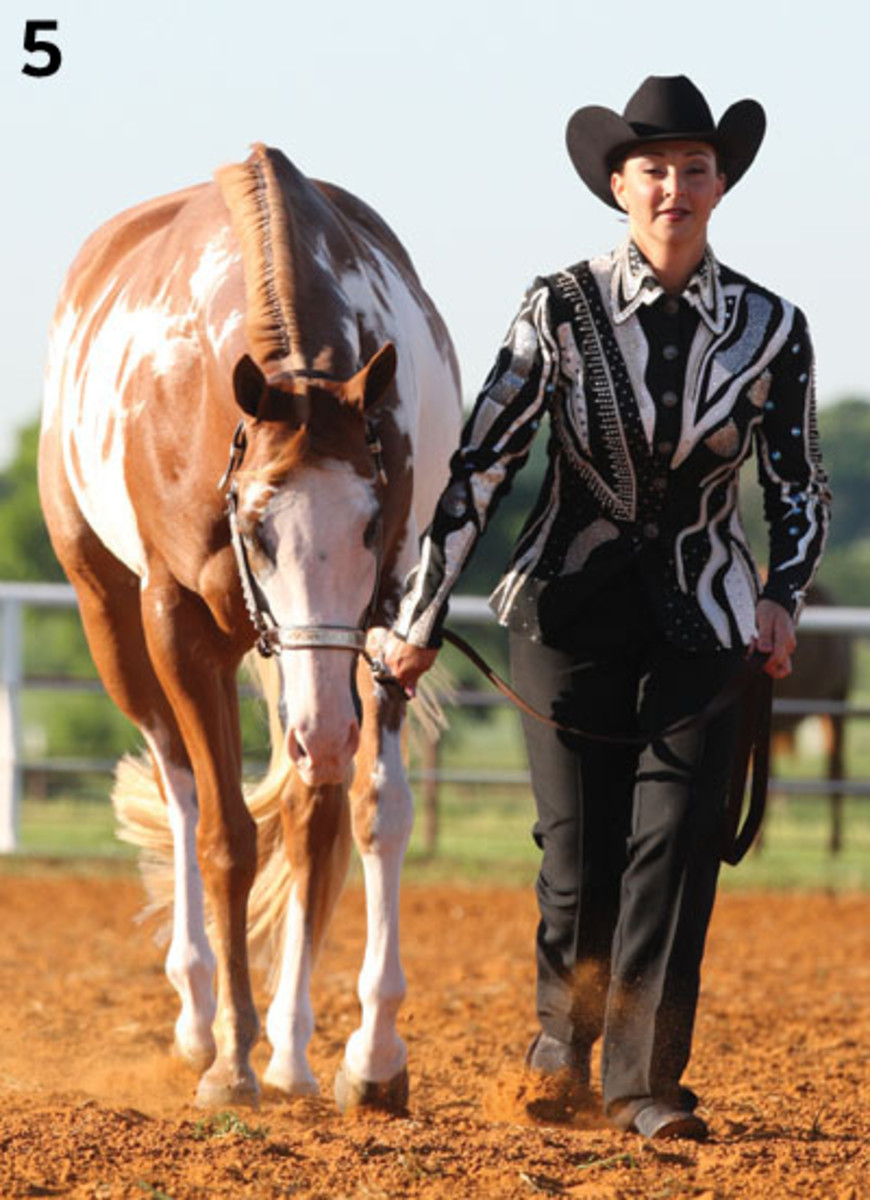Lesson Objective
Learn the proper way to run with your horse during trotting elements of a showmanship pattern, so that you present yourself and your horse in the most precise, eye-appealing manner.
Top showmanship exhibitors all share one quality: the ability to show style and precision without over-exaggerating their body position. When it comes to presenting a skilled and graceful appearance, as opposed to looking awkward and artificial, how you run alongside your trotting horse is an especially important element.
Here I’ll evaluate a showmanship exhibitor and explain what to strive for when trotting your horse and what to avoid. This instruction will help you make a positive impression on the judge and display your skills.
1. The exhibitor has an overall eye appeal—she looks confident, tall, poised, and in control. She appears harmonious with her horse and offers a presentation of togetherness; they look in sync with each other. The most important thing is that they look authentic. Their connection and her confidence are real, not manufactured.

2. She’s standing tall, with her eyes up. Her shoulders are open; her elbows have the proper bend; and she’s positioned near her horse’s throatlatch, so she’s not leading out in front of her horse nor lagging behind. Her hands are closed, and she has a soft feel on the lead. Her hips are underneath her torso, and she’s running heel-to-toe (discussed next).
3. Running in a heel-to-toe motion reduces the concussion of the exhibitor’s steps. It also allows a smoother run, without a lot of up-and-down motion, and keeps her hips steadier. I suggest you practice running in this way while holding a glass of water. Focus on the skating-like, heel-to-toe run, without squatting.
4. Here the exhibitor is a stark contrast to her confident-looking self in Image 1. Her hands are too low, and she has a crouched position, which pulls down her horse’s head and makes him heavy on the forehand. She’s running on her toes, which looks awkward. She and her horse don’t look as polished here.
5. Now you can really see what effect the handler’s position has on the horse—his nose is down by his knees, because her hand is so low and her torso is bent forward. She’s balancing off her horse’s head, which is dangerous. The horse could flip his head up in protest of the downward pressure.

6. This looks artificial. The handler’s back is stiff; her hands are open (which is a safety issue); and she’s moving up and down rather than forward, creating a distracting bobbing motion. She’s also too far forward on her horse’s neck for proper leading position.
7. With her high hands and knees, and toe-running action, the exhibitor will appear to bob up and down. She’s leaning too far forward, with her upper body in front of her hips. The judge would be focused more on her awkward body position than on her pattern and skills.
Sara Simons, Aubrey, Texas. A past APHA Leading Exhibitor and winner of 30-plus world titles, Simons trains horses and coaches youth and amateur riders from Simons Show Horses, which she owns with her mother, Andrea, and sister, Jana. She’s an approved judge for APHA, NRHA, and NSBA.







